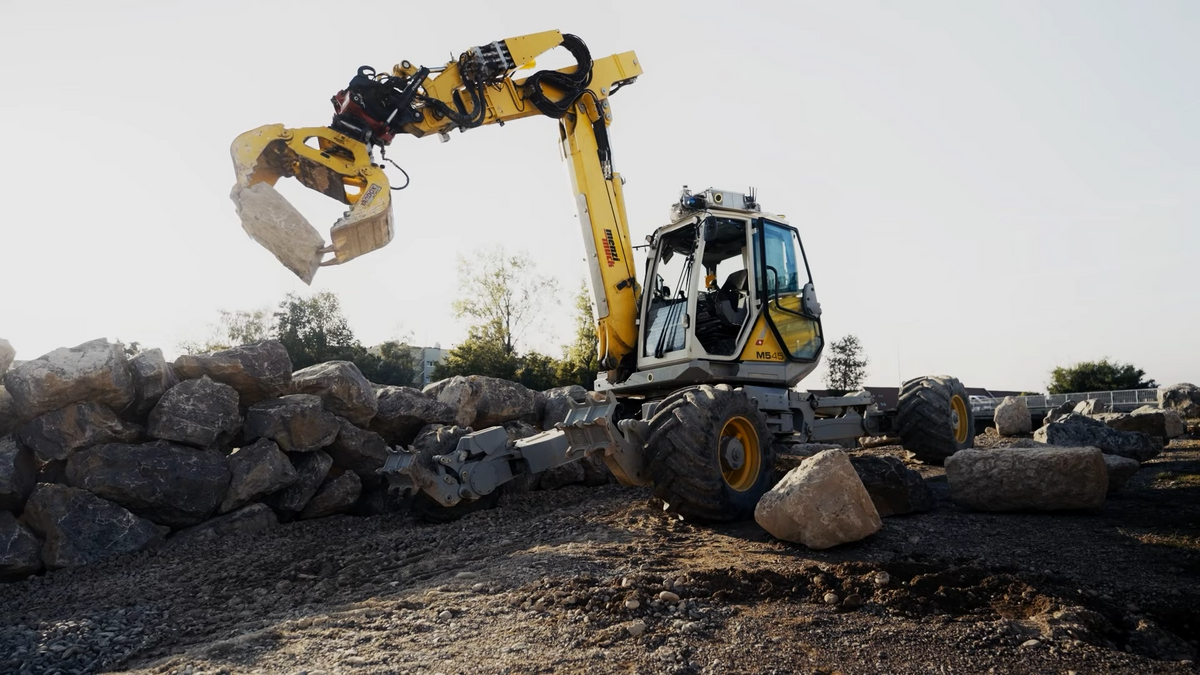Video Friday is your weekly selection of awesome robotics videos, collected by your friends at IEEE Spectrum robotics. We also post a weekly calendar of upcoming robotics events for the next few months. Please send us your events for inclusion.
Humanoids 2023: 12–14 December 2023, AUSTIN, TEXAS
Cybathlon Challenges: 2 February 2024, ZURICH
Eurobot Open 2024: 8–11 May 2024, LA ROCHE-SUR-YON, FRANCE
Enjoy today’s videos!
This is such an excellent use for autonomous robots: difficult, precise work that benefits from having access to lots of data. Push a button, stand back, and let the robot completely reshape your landscape.
[ Gravis Robotics ]
Universal Robots introduced the UR30 at IREX, in Tokyo, which can lift 30 kilograms—not the 63.5 kg that it says on the tire. That’s the weight of the UR30 itself.
Available for preorder now.
[ Universal Robots ]
IREX is taking place in Japan right now, and here’s a demo of Kaleido, a humanoid robot from Kawasaki.
The Unitree H1 is a full-size humanoid for under US $90,000 (!).
[ Unitree ]
This is extremely impressive but freaks me out a little to watch, and I’m not entirely sure why.
[ MIT CSAIL ]
If you look in the background of this video, there’s a person wearing an exoskeleton controlling the robot in the foreground. This is an ideal system for imitation learning, and the robot is then able to perform a similar task autonomously.
[ Github ]
Thanks, Kento!
The video shows highlights from the RoboCup 2023 Humanoid AdultSize competition in Bordeaux, France. The winning team NimbRo is based in the Autonomous Intelligent Systems lab of University of Bonn, Germany.
[ NimbRo ]
This video describes an approach to generate complex, multicontact motion trajectories using user guidance provided through Virtual Reality. User input is useful to reduce the search space through defined key frame. We show these results on the humanoid robot, Valkyrie, from NASA Johnson Space Center, in both simulation and on hardware.
For the foreseeable future, this is likely going to be necessary for most robots doing semi-structured tasks like trailer unloading: human in (or on) the loop supervision.
Of course, one human can supervise many robots at once, so as long as most of the robots are autonomous most of the time, it’s all good.
[ Contoro ]
The Danish medical technology start-up ROPCA ApS has launched its first medical product, the arthritis robot “ARTHUR”, which is already being used in the first hospitals. It is based on the lightweight robot LBR Med and supports the early diagnosis of rheumatoid arthritis using robot-assisted ultrasound. This ultrasound robot enables autonomous examination and can thus counteract the shortage of specialists in medicine. This enables earlier treatment, which is essential for a good therapeutic outcome.
[ ROPCA ]
Since 2020, KIMLAB has dedicated efforts to craft an affordable humanoid robot tailored for educational needs, boasting vital features like an ROS-enabled processor and multimodal sensory capabilities. By incorporating a commercially available product, we seamlessly integrated an SBC (Orange PI Lite 2), a camera, and an IMU to create a cost-effective humanoid robot, priced at less than $700 in total.
[ KIMLAB ]
As the newest product launched by WEILAN, the 6th generation AlphaDog, namely BabyAlpha, is defined as a new family member of the artificial intelligence era. Designed for domestic scenarios, it was born for the purpose of providing joyful companionship. Not only do they possess autonomous emotions and distinct personalities, but they also excel in various skills such as singing and dancing, FaceTime calling, English communication, and sports.
[ Weilan ] via [ ModernExpress ]
Evan Ackerman is a senior editor at IEEE Spectrum. Since 2007, he has written over 6,000 articles on robotics and technology. He has a degree in Martian geology and is excellent at playing bagpipes.



